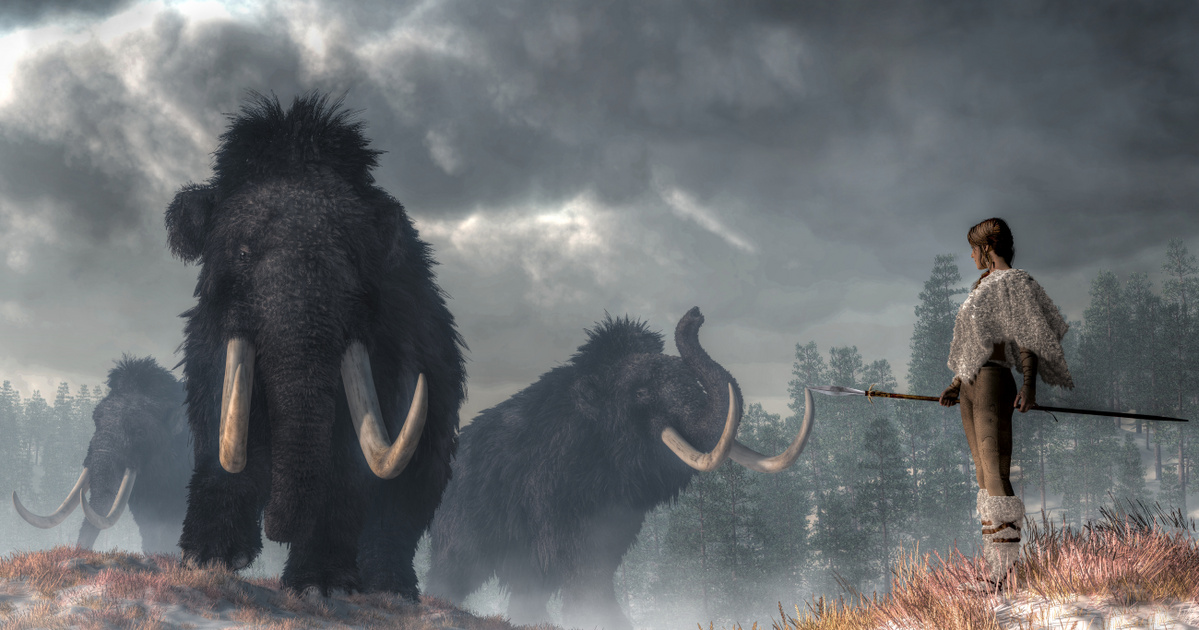After the last ice age, one of the most prominent representatives of the Pleistocene megafauna that dominated the Earth was the cold-adapted relative of today's elephants, the woolly mammoth. Mammoths died out forever about ten thousand years ago, and the new leaders of the planet, humanity, played a major role. People loved to hunt animals that were four and a half meters tall and weighed about 15 tons, as evidenced by the fact that they built huts from their bones and sculptures from their tusks.
Little is known about how our ancestors killed mammoths. At this time, stone pointers were already used, which could be attached to the ends of long sticks and used as spears. However, this was not enough for a successful hunt – the missing element of the story has been deciphered by a team from the University of California, Berkeley.
Experts were able to decipher the previous technology by studying the methods of North American indigenous people and African hunters.
Surprisingly, the researchers reported on a video game released in 2016, which is far cry primitiveIt is referred to. This game is from the French company Ubisoft. distant cry A Stone Age version of the popular pseudo-historical action-adventure series. Part of the story is a mammoth hunt, where the player can run up and stab a bloodless primitive animal.
This approach is somewhat concerned with human existence and first person shooter It can also be interpreted as a philosophical amusement aimed at games. Berkeley anthropologist John Sancerre says that they are useful for fun but ignore the realities of life in the Ice Age. According to Sancerre, stone tools meant something different in this era. Tips made of the right stone and working well could have come from far away and were valuable according to the concepts of the time. A straight branch that was strong enough was not necessary at any time. The stone blade was an essential tool for survival, and you were not prepared to throw it away even in the event of a certain prey.
rumble
The bigger problem was that experiments with ballistic gel and spear versions showed that they were not effective at hunting. The human-fired device was too weak, and could only cause superficial damage to a ten-ton animal.
According to experts, previous hunters used less individual, but safer and more effective tactics. Animal
His strength and speed turned against him.
This was done by pinning spears into the ground and digging them in. The mammoth was then propelled by running towards the camouflaged spears and stabbing itself. Thus the spear exerted a much greater force than if it were swung by a human arm.
Furthermore, the stone point was only one component of the system, since it would certainly have broken the handle when a certain force was applied. Its role was to make a way with its hard edge into the outer shell of the mammoth, and behind the bone joint it continued into a pointed wooden stake. The structure thus made the largest possible wound while being safe for human use. This was probably especially important when stable defenses of fixed spikes were built, in the manner proven thousands of years ago, by which it was possible to escape from the most ferocious members of the mammoths.
All this meant a technical and cultural leap at the same time. The leadership had to be coordinated efficiently. Fire would have been an excellent tool, although people certainly tried not to burn down their living environment. The efficiency of the process could have been further improved by a more sophisticated infrastructure, for example, if a diversion wall like the one recently found deep in the Baltic Sea had been built at the right point on the migration route.
(University of California, Berkeley, Wikipedia)














































